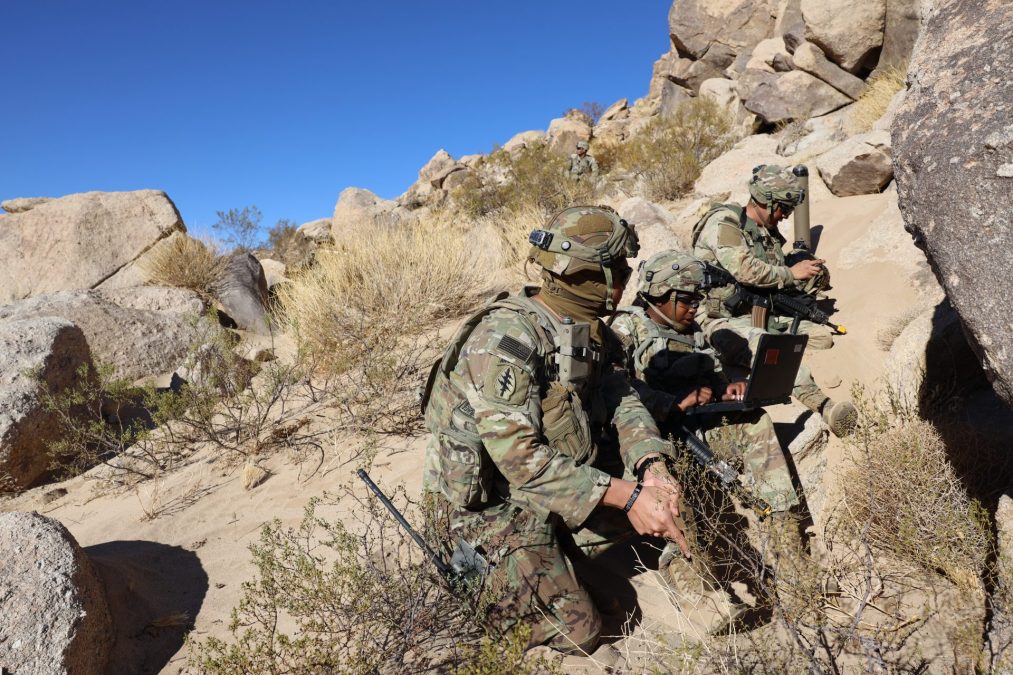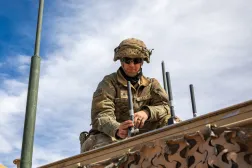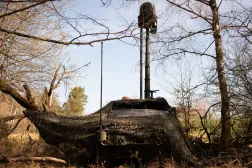Army looking to inject more cyber capabilities into formations at the division level

AUGUSTA, Ga. — As the Army is reintroducing electronic warfare capability to formations, it’s looking to give them more cyber weapons as well.
Particularly, with divisions as the main units of action going forward, the service is aiming to add cyber tools at that echelon in the next two years.
While the Army has been on a path to introduce certain capabilities, largely through Radio Frequency-enabled cyber, it is building out new forces to provide cyber power for commanders on the battlefield.
“When we think about it today, we recognize that there needs to be something at division level, because your ability to understand the IP space, understand the networks that you’re operating within, while you’re defending your own and finding potential to work against an adversary’s, there needs to be something within the tactical formations,” Maj. Gen. Ryan Janovic, commander of the Cyber Center of Excellence, said in an interview this week at the TechNet Augusta conference. “We have the cyber mission force, but its ability to focus that level is challenged by the demand that’s put upon it for other priorities, serving geographic combatant commands.”
The cyber mission force includes the 147 teams that the military services provide to U.S. Cyber Command to conduct operations. They are largely aimed at the strategic level and have historically focused on Internet Protocol-based targets, conducting operations from remote locations.
Increasingly, there are targets that either aren’t reachable through IP networks or remote access might not be possible, necessitating the need for more expeditionary cyber capabilities and units. Additionally, maneuver commanders may need certain digital tools on the ground to support their activities.
Most of these capabilities the Army wants at division will fall under the banner of the Army’s 11th Cyber Battalion, which provides tactical, on-the-ground cyber operations (mostly through radio-frequency effects), electronic warfare and information operations. The unit consists of expeditionary Cyber and Electromagnetic Activities (CEMA) teams, or ECTs, which are scalable formations designed to augment units upon request.
The Army’s cyber branch, 17 series, also encompasses electronic warfare, meaning soldiers learn both disciplines at the schoolhouse. This is important given the similarities and sometimes blurred lines between tactical or expeditionary cyber, RF-enabled cyber and pure EW capabilities.
“What we find is the opportunity is to have a local cyber force in contact with adversary networks or understand what the adversary is doing in that space, and use that to decide what can be done locally, what has to be passed to a higher echelon to gain that support,” Janovic said. “As we experiment with that, finding the balance between what is cyber and what is electromagnetic warfare, that’s a problem of language that we often have is when we aggregate the language to be Cyber Center of Excellence, is several things. Knowing the difference between what our demands are in IP space and what our demands are in the RF spectrum, we’ve got to train 17s to do both of those. Oftentimes, when we’re thinking about cyber at the division level, really, what we’re talking about is electromagnetic warfare.”
At each staff section at echelon, the Army has planned to include CEMA sections that will act as planners. They will synchronize those capabilities, and if a commander believes a cyber effect should be executed at the division level, an ECT could be sent to reinforce.
The Army is still experimenting with where exactly those ECTs will come from or reside, theater or corps level, to downward reinforce at the division level.
The difficult task will be figuring out how to move these capabilities seamlessly at echelon to be responsive to a commander’s request in a timely fashion.
“That’s often the hardest part, is anticipating what the commander will require, what might be necessary at division and corps level,” Janovic said. “We work on a little bit longer cycle, sometimes in the generation of capabilities and outcomes in the cyber mission force. We need to experiment with that and see what can we do rapidly? How do we satisfy that? And then where I pointed out that it’s a bridge, how do you practice that bridge so it becomes more timely?”
Officials also noted that division-level cyber capabilities could also come from the Army’s Multi-Domain Task Forces.
Injecting these types of capabilities into tactical formations on the battlefield is a top priority for the Army’s new principal cyber advisor, who works directly for the service secretary and can influence the political will to get some of those tasks done.
“The other thing that I’m probably a champion for at the Pentagon is what [Army Cyber Command commander Lt.] Gen. [Maria] Barrett’s 11th Cyber Battalion is doing. It’s remarkable. I sell that as a success story and one that we should really expand,” Brandon Pugh, the principal cyber advisor and first political appointee in that role, told conference attendees. “I think that’s the type of capability making sure we’re infusing cyber in conflict and potentially in an operational unit and where we should get to … There are certain capabilities that we need proximate access for, we can’t do thousands of miles away looking at that, especially in an EW context.”
Pugh said part of his role within the secretariat’s office is raising awareness that these capabilities should be infused across the operational force and ensuring they’re resourced from a budgetary perspective.
“Part of the initial endeavors, when the secretary first came in, was looking through efficiencies and you’re realizing that perhaps we can cease procurement [of] certain capabilities, but reinvest that in other capabilities in a future battlefield they need. Just personally speaking, I see that [expeditionary cyber] being a prime example,” he said.






